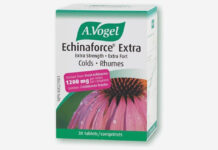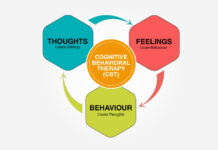
Whether you’re living on your own for the first time or well into adulthood, you likely have memories of being scolded as a child to eat your vegetables.
Now you’re old enough and wise enough to know that your scolders were right: You are happier and healthier when you get your daily dose of fruits and vegetables—at least five to nine servings a day, according to the World Health Organization.
But knowing it doesn’t mean you achieve it. It’s all too easy to fall into the convenience trap of fast food, frozen pizza and ramen noodles.
Holiday Zanetti, a senior research scientist and clinical investigator for Nutrilite™ products, has some tips and tricks for being an adult when it comes to getting your fruits and vegetables.
Plan meals for the week
Convenience meals happen when you are pressed for time or you open a refrigerator to find empty shelves. Holiday says planning meals for the week will help, as will dedicating one afternoon a week to meal prep so all the ingredients are ready to go.
“Have some easy, go-to foods and recipes,” Holiday said. “Have a shopping list and get organized.”
Make healthy eating fun
Make eating healthier a group project by involving your friends in any or all steps of the process: planning, shopping, prepping or eating.
“This might mean alternating between homes for meals, exchanging easy or quick recipes, exchanging dishes on alternative weeks, splitting recipes or simply cooking together,” Holiday said. “Food and cooking build networks, relationships and friendships.”
Shop smarter
Fresh is always better when it comes to fruits and vegetables and farmers markets are a great way to ensure you’re getting the freshest, Holiday said. You’ll see what’s in season and get inspiration for new recipes.
If fresh isn’t an option, frozen or canned vegetables are still nutritious, Holiday said. She recommends skipping the ones that come with premade sauces.
“Think about what most resembles the fresh, natural form of that fruit or vegetable,” she said. “Look for the plain versions, meaning no sugar added, unsweetened, packed in its own juice, no salt added and reduced sodium.”
And no matter what you’re buying, check the nutrition label. Here’s more information on deciphering those labels so you know what you’re getting.
What about nutritional supplements?
Whole foods are the best source of vitamins, minerals and phytonutrients, Holiday said.
“But sometimes it may feel that your balanced diet is not so balanced,” she said. “Then a multivitamin/mineral supplement might be your best bet. Omega-3s are good choice on any day, too.”
The Nutrilite™ brand offers two options for a multivitamin/mineral supplement—Nutrilite™ Double X™ Vitamin/Mineral/Phytonutrient Supplement and Nutrilite™ Gluten-free Daily—and several options for omega-3 supplements.
To learn more about those or other supplements that might be right for you, try the Nutrilite Supplement Recommender.
Get started
Now that you’re armed with information, it’s time to put it in action and reap the rewards.
“The first healthy step can be the hardest, but the second and third will get easier and easier,” Holiday said. “And the payoff is endless, especially with respect to your health and wallet.”
To learn more about Nutrilite supplements visit the websites for Amway US or Amway Canada.
Source: amwayconnections.com











